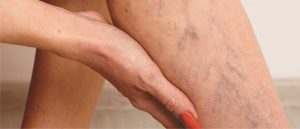

One of the main causes of varicose and spider veins is poor circulation, which can be caused by a sedentary lifestyle, obesity, pregnancy, or hormonal imbalances. Therefore, a preventive approach to treating these conditions should include lifestyle modifications that improve circulation, such as regular exercise, a healthy diet, elevating your feet, wearing compression stockings, and avoiding prolonged sitting or standing. Additionally, the risk of getting spider veins and varicose veins increases with age and if you are female.
When considering sclerotherapy, an important thing to consider is selecting the right treatment provider. Sclerotherapy should only be performed by a licensed and experienced healthcare provider. The provider should also take the time to evaluate the patient’s medical history and any underlying conditions that may affect the treatment. Speaking to your provider will help you understand your options to help you decide whether sclerotherapy is the best option for you.
While sclerotherapy works well for many people with varicose veins and spider veins, there are some who are not eligible for sclerotherapy for various reasons. Some of these being if you are pregnant, breastfeeding, have an active deep vein thrombosis or blood clot, or are non-ambulatory. Before the procedure, your provider will decide if you are a good candidate for sclerotherapy.
During the sclerotherapy procedure, the provider will inject a solution, either a saline solution or a chemical solution, into the affected veins using a very fine needle. The solution irritates the lining of the veins, causing them to collapse and eventually fade from view. The procedure usually takes thirty minutes to an hour and does not require anesthesia. The number of treatments will depend on the quantity, how large, and the location of the veins to be treated.
If multiple treatments are necessary, following appointments will be scheduled about a month apart.
After the procedure, the patient may experience some mild discomfort, swelling, or bruising, but these symptoms usually subside within a few days. The patient should also wear compression stockings for a few days following the procedure to aid in healing and improve the results. This procedure does not require any downtime besides avoiding high impact exercises and heavy lifting for a few days following the procedure. Patients are encouraged to get back to normal activity and mild exercise right away.
It is important to schedule regular follow-up visits with the provider to monitor the progress of the treatment and address any concerns or complications. In some cases, as previously addressed, additional sessions may be necessary to achieve the desired results.
Sclerotherapy is a safe and effective treatment for varicose and spider veins and a preventive approach is necessary to address the root causes of the condition and ensure the best possible outcomes to reduce the chance of new spider veins and varicose veins forming. By making lifestyle modifications, choosing the right provider, and maintaining overall wellness and self-care, patients can achieve long-lasting results and improve their overall health and well-being.
The Greatest Wealth is Health
The key to staying healthy includes good preventive care.
MCC Wellness Group
239-270-5863
mccwellnessgroup.com
 Southwest Florida's Health and Wellness Magazine Health and Wellness Articles
Southwest Florida's Health and Wellness Magazine Health and Wellness Articles

